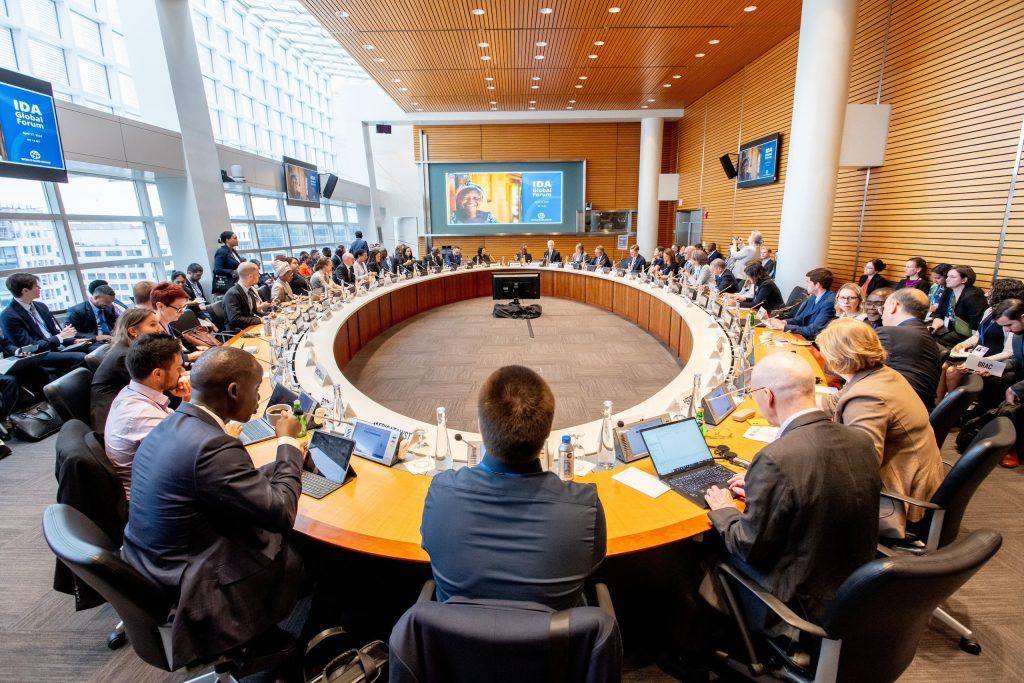
This year’s Spring Meetings of the International Monetary Fund (IMF) and the World Bank Group opened amid news of two surprising findings.
First, one in three economically vulnerable countries is now poorer than before the start of the Covid-19 pandemic, the World Bank reported.
Second, in 2023, developing countries received $200 billion less from international financial institutions than they paid in bond and loan repayments.
These harsh realities are shaping the context of this year’s UN climate negotiations (COP29) taking place in Baku, Azerbaijan, in November, where governments are expected to agree on a new climate finance target. For this goal to be effective, it must be supported by reforms in the international financial architecture, including the renewal of the World Bank and the IMF.
No more ‘billions to trillions’
At the 2015 UN climate negotiations in Paris, governments agreed to formulate a new climate finance target for 2025 to succeed the existing target of $100 billion a year by 2020.
In 2021, governments in developed countries had only mobilized US$89.6 billion in climate finance, and are likely to have reached the US$100 billion target in 2022, according to the Organization for Economic Co-operation and Development (OECD).
This public financing was also expected to help mobilize large sums of private financing by deepening local financial markets and creating a climate conducive to private investment, as captured in the “billions to trillions” agenda of the World Bank. However, in 2022, the IMF estimated that multilateral development banks (MDBs) were only able to mobilize 1.2 times the private resources they themselves had committed.
While the amount of money tied to the climate finance target will be a main focus at COP29, the new climate finance negotiations in Baku will need to have two elements that require the involvement of the broader international financial architecture.
First, fiscal restrictions, which are limiting the ability of governments to invest in development and climate change. These restrictions must be removed through an effective sovereign debt architecture.
Second, a new climate finance target, which will not be enough on its own. The objective should be supported by expanded MDB financing that is low-cost and long-term.
Against these markers, what did the 2024 Spring Meetings deliver and what needs to be done before Baku?
Since October 2022, the World Bank has undertaken a series of internal policy changes to address the challenges of the 21st century. These include measures to stretch its balance sheet so that it can lend out more money backed by shareholders’ capital.
At the Spring Meetings, the World Bank reported on a series of internal financial reforms it had begun to implement to facilitate an increase in lending. For example, the new equity-to-loan ratio will allow the bank to lend an additional $40 billion over the next 10 years. It also received a new round of commitments totaling $11 billion, which will allow it to increase its lending capacity.
However, the World Bank and other MDBs will need to go beyond these balance sheet optimization measures to achieve the scale of financing commensurate with the development and climate ambitions of client governments. Shareholders will need to provide these banks with new capital, and the World Bank’s concessional lending arm will need a major replenishment. One prominent report suggests that emerging and developing economies (excluding China) will require around $3 trillion in additional financing annually by 2030 toward shared climate and development goals. Using these figures, the G20 Independent Expert Group estimates that $260 billion will have to come from the MDBs, a tripling in lending, which the MDBs are still far from achieving.
Debt
The debt crisis is affecting many countries around the world. Of 66 economically vulnerable nations, 47 will exceed their solvency thresholds if they invest the necessary resources to meet the objectives of the Paris climate agreement and the UN Sustainable Development Goals. This finding underscores previous reports indicating that most low-income countries lack the fiscal capacity to implement their national climate adaptation plans. More broadly, a dysfunctional system of sovereign debt restructuring has been holding back investment and slowing progress on development and climate change priorities.
Discussions about climate finance often revolve around altering the risk and return profile of projects. The surrounding macroeconomic and fiscal context does not receive as much attention. Although this is changing, climate finance will have to become mainstream across debt restructuring negotiations. These must explicitly take into account climate investment needs and the macroeconomic implications of climate risks.
Countries must do their part by identifying how they can further increase their climate ambition if the international community provides corresponding debt relief and concessional financing. The UN climate process has a history of countries proposing “conditional” targets that governments agree to meet if certain funding or other conditions are met.
The international financial architecture also needs to be more resilient to climate shocks. The World Bank announced climate resilient debt clauses to help borrowing governments cope with climate shocks, and the European Bank for Reconstruction and Development followed suit. However, these clauses are still far from becoming standard features of loan agreements.
As UN climate chief Simon Stiell recently noted, the IMF’s Disaster Containment and Relief Trust Fund is an existing tool that could help countries cope with the financial consequences of climate impacts. The fund provides debt relief to eligible IMF borrowers so they can focus on reconstruction and recovery without having to return valuable funds to the IMF. It could be a key instrument in the international community’s arsenal to address loss and damage. However, confidence is low, with only $100 million available for debt relief. IMF members need to provide more resources to the fund.
When the Paris Agreement was adopted, there was a lot of hope behind the “billions to trillions” agenda for delivering climate finance. But as debt payments outpace new financing, countries are seeing “millions in, billions out.” If climate finance is to be impactful, the new objectives expected to be agreed in Baku must be accompanied by profound reforms of the financial architecture.
Note: this is an article republished from the media “Dialogue Earth” through a cooperation agreement between both parties for the dissemination of journalistic content. Original link.

Rishikesh Ram Bhandary is the deputy director of the Global Economic Governance Initiative at Boston University’s Center for Global Development Policy. He is an expert on climate finance and international climate negotiations.
Source: https://reporteasia.com/opinion/2024/05/27/finanzas-sostenibles-requieren-mejora-arquitectura-financiera/

